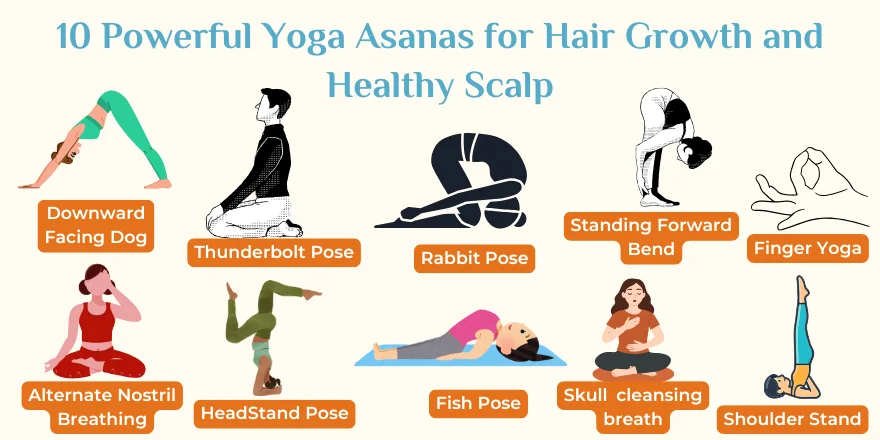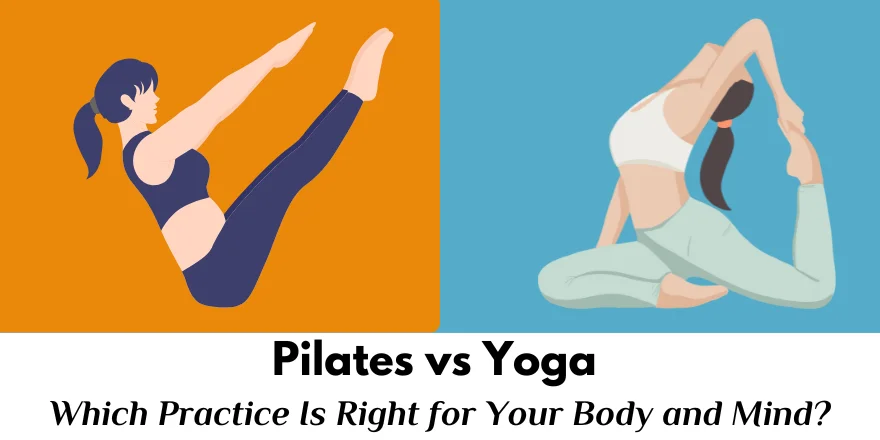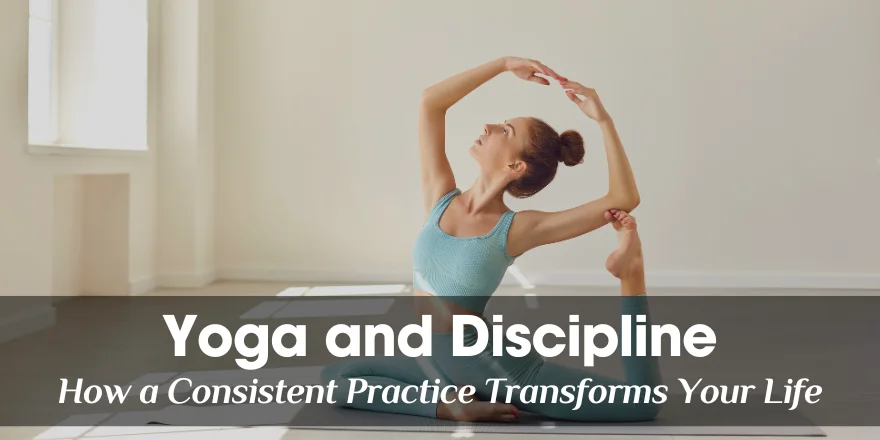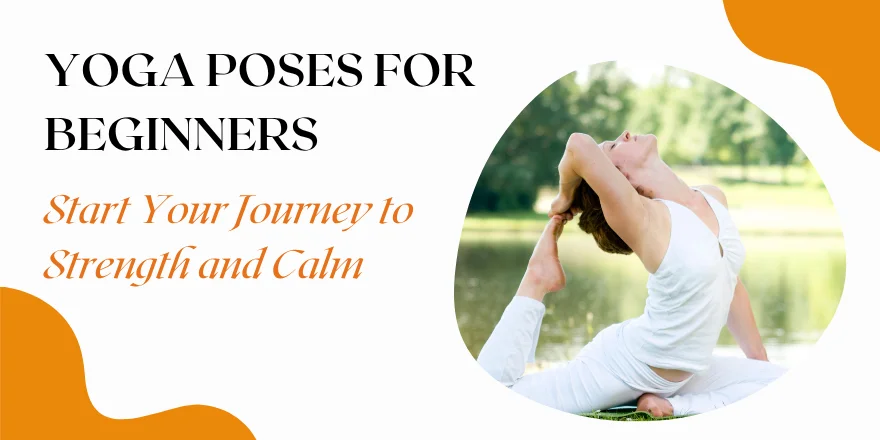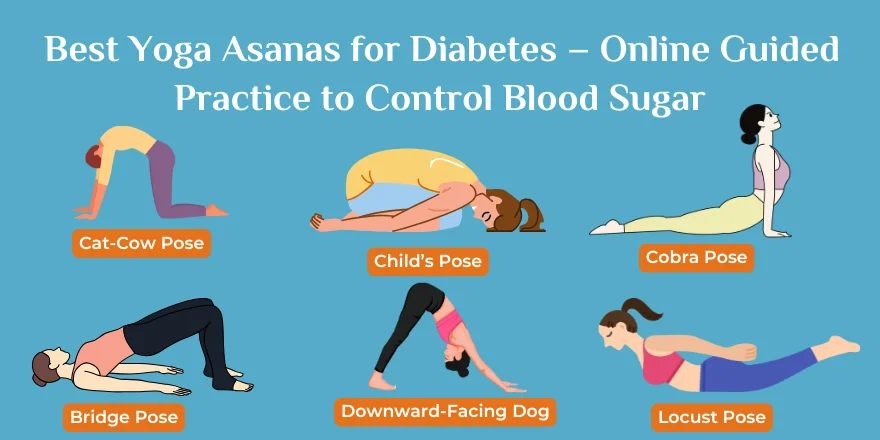Yoga is exercise but it is much more than that, it has been practiced over centuries that unites the body, mind and breath. When you have ever wondered how to begin your yoga practice, you should learn various yoga poses first. No posture is pointless as they are used to develop strength, enhance flexibility, relax, or revitalise the body.
We will discuss the various yoga positions and their advantages in this manual with easy-going yoga positions up to more vigorous and movement standing postures. At the end, you would have known how to select poses that are applicable to your lifestyle and wellness ambition.
The Benefit of learning other yoga positions?
Such a routine may become boring, through day by day. Diverse learning and practising have several advantages, including the benefits of yoga:
Balanced fitness: Certain poses are based on flexibility, and others strengthened or enhanced the balance.
Clear mind: We need practice keeping you on your feet.
Personalization: You have the option of poses that are identified according to elements of energy level, mood or health requirements.
Whole body problem: Various yoga postures stimulate various body system- nervous, digestive, and muscular.
Different Yoga Asanas in Beginners.
When you are a beginner in the world of yoga, then proper poses that are not complicated, yet have the desired effect, can be a good starting point. These do not need said equipment and can be performed at home.
1. Mountain Pose (Tadasana)
- How to achieve it: Stand on your feet with perfect uprightness and relax your shoulders, place your arms relaxed by your sides and distribute weight equally.
- Advantages: Enhances posture, awareness, and grounding.
- Importance: It is on the basis of this starting position of most standing yoga poses.
2. Child’s Pose (Balasana)
- How it is done: You want to kneel on the floor and with your forehead on the mat you should sit backwards on your heels and case your arms up in front of you.
- Benefits: Stress reliever, as well as spine stretcher that relaxes the mind. Between in the best bone wise, When any perches interpose.
3. Balasana (Cat-Cow Stretch)
This posture is initially referred to as Marjariasana-Bitilasana.
- Instructions: Go down on your hands and knees every other body part rounding it (cat) and arching (cow).
- Advantages: enhances the flexibility of the spine and relieves tension at the back.
- Senior tip: Breath with your moves, inhale cow, exhale cat.
4. Tree Pose (Vrikshasana)
How to do it Stand erect, foot on the other thigh (or calf), palms touching each other at the chest.
- Benefits:Enhances balance, attention and strength of legs.
- Alteration: Amateurs can leave one toe on the floor in order to be stable.
Different Standing Yoga Poses
Posture exercises develop power, stability and strength. They are mostly trained in series to enhance stamina and coordination.
1. Warrior I (Virabhadrasana I)
- The procedure: First take one step backwards with one foot and flex front knee with arms held above the head.
- Good things: Makes legs stronger, hips open and determination is built.
- Its powerfulness: The pose is a representation of inner strength and courage.
2. Warrior II Virabhadrasana II.
- How to perform it: It is like the warrior but the arms are extracted laterally and the eyes are looking over the hand that is placed in front.
- Good things: Strengths thighs, more focused, more endurance.
- Hack: Shoulders should be relaxed in order to prevent tension.
3. Triangle Pose (Trikonasana)
- What to do: Starting in standing position, take one leg to the side, expand the arms, and reach up and one hand to the shin or floor and one hand to the ceiling.
- Virtues: Enhances elasticity, promotes digestion and accords the chest openness.
- Best when: you want to stretch on the end of a hard working day.
4. Chair Pose (Utkatasana)
- How to do it: Take a stand with hips-width distance between feet, sit-down in imaginary chair bending of the knee joints, hands above the head.
- Benefits: Strengthens the legs, works the core.
- Messer Tip: Do not be too deep You read it out shallow and deepen, as you feel.
Yoga Poses and their advantages.
Yoga does not only affect the flexibility but also physical, mental and emotional health. These are some of the additional poses, which have specific benefits:
1. Cobra Pose (Bhujangasana)
- Benefits: This will enhance and strengthen the spine, build a better posture, and expand the chest.
- Best to counteract: The consequences of a long-night.
2. Bridge Pose (Setu Bandhasana)
- Benefits: Helps to make glutes stronger, helps to alleviate back pain, kick-starts digestion.
- Many people believe that the mind and the body are linked with each other: The mind-body, too, brings a calming effect.
3. Seated Forward Bend (Paschimottanasana)
- Benefits: Streches the hamstrings, enhances flexibility and is relaxing.
- Hint: Turn knees a couple of degrees in case hamstrings are tight.
4. Corpse Pose (Savasana)
- Benefits: Less stress, Better sleep and Combine your practice.
- Why it is important: This is the so-called most important relaxing pose.
Ready to transform your routine? Start practicing 2–3 different yoga poses from this guide today. Small daily steps bring lasting change.
How to Get the best out of your Practice.
Breath slowly: Do not move to complicated poses.
Props: Pads, belts, blocks, and so forth can be used to make positions easier.
Breathing consciously: In yoga, movement is not as crucial as breathing is.
Become responsive to your body: You should never strain yourself when engaging in yoga, but in fact, yoga should be enjoyable rather than bringing pain.
Be regular: Be regular in 10 minutes a day, as a volunteer provides more benefits than a once-in-a-while extensive session.
Final Thoughts
Trying all types of yoga personnel is comparable to having a doorway of a thousand options to your health and well-being. Yoga suggests something to everyone, as aspiring similes move on to empowering postures. You need a flexible pose, strong, to relieve stress, or to be mindful, there is a pose that will help.
That is, start small, breathe deeply and give your practice a natural growth. These poses cannot only change your body but they will also bring sanity and sanity in your everyday life.
FAQs on Different Yoga Poses
Q1. What is the number of yoga poses to be initiated with (as a beginner)?
An amateur yoga practitioner would want to begin with 5-7 basic yoga postures which one finds easy to follow, e.g. Mountain Pose, Childs Pose, Cat-Cow Pose, Tree Pose. These base movements contribute towards creating a sense of fluctuation, stretchiness, and sensitivity without straining the body or in any way taking tremendous power.
Q2. How can one know what are the most effective yoga poses to achieve flexibility?
Triangle Pose, Forward Bend and Cobra pose are good choices to use in order to be flexible. These poses do stretch and expand the hamstring and chest. By doing them regularly, one can get nervous tension worked out of muscles, mobility can be slowly increased, and the body will have to balance well without putting stress on joints.
Q3. Do standing yoga poses exceed seated yoga poses?
Standing yoga poses are not always harder than seated pose, but require much more balance, coordination, and strength of the legs. The sitting postures, in their turn, usually involve strain on hips and hamstrings. The two are also fundamental and complementary to each other in order to establish a balance in yoga.
Q4. Can I do yoga every day?
Indeed, Yoga is something you can do per day, however, listen to your body. Yoga does not have to be a challenging practice that takes place everyday: a simple combination of stretching, deep breathing, and several active poses would suffice. Regularity causes long-lasting advantages of power, elasticity and clarity of the mind.
Q5. What is the length of time I need to maintain each pose of the yoga?
Novices ought to strive to spend 1530s in every yoga posture with emphasis to breathing. Strength and flexibility increase and with time, you can slowly stretch to one minute or even longer. It is all just to remain relaxed and not to put any stress on the body.



